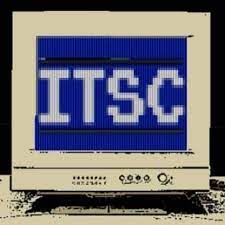At the 6th Agri-Tech Week event of 2023, hosted by Rothamsted Research, discussions centred around genome engineering, precision breeding tools, and the commercialisation of scientific advancements.
The world’s oldest agri-research station excels in newest breeding tools
Rothamsted has always been in the vanguard of GM technology, and it is embracing the new precision breeding tools of gene-editing as well.
Its Genome-Editing Unit can handle a wide range of crops including wheat, rice, oilseed rape, tomatoes and beans, and it will offer this on a contract service is capacity allows.
Novel forage crops with a higher lipid content are being developed to help reduce methane emissions from ruminant livestock without compromising nutrition. Trials on a new type of wheat with a lower risk of producing harmful acrylamide are also underway.
The researchers are hopeful that the new Genetic Technology (Precision Breeding) Act which came into force earlier in 2023 will speed up their research and the ability to translate it. As Nigel Halford explained:
“Regulation drives the kind of science we do and how we do it.”
A Precision Breeding Working Group has been convened by Defra at the request of Number 10, to understand what is needed for gene-edited material to become commercially available. Consisting of researchers, plant breeders, growers, food manufacturers and retailers, the plan is to explore and facilitate routes to market.

The commercial angle
As well as needing to do great science, funding for the research needs to be secured, the regulatory landscape must be navigated, and there is public perception to consider.
“Translating this kind of research into commercial practice is really hard – and it takes a long time!”
said Prof Jonathan Napier, Omega-3 Camelina Development Flagship Leader at Rothamsted.
He should know – he has spent the last 25 years working to produce camelina plants with omega-3 oil that has the same composition as that produced by fish. The goal is to ease pressure on fish stocks and to provide a land-based source of nutrition.
However, Rothamsted is also home to several spin-out and start-up businesses. PheroSyn, for instance, uses synthetic chemistry to replicate identical insect pheromones, to use either to disrupt mating, or employ as a “lure and kill” pest management strategy.
Phytoform uses large data sets to train AI models around modulating the activity of different genes. With six programmes on potato, tomato and lupin, field trials are due to start next year.
Ask the audience
During a short workshop session, delegates (consisting of researchers, processers, breeders, tech developers and food manufacturers) agreed on the need to prioritise and coordinate education and regulation in parallel. This would build confidence and enhance understanding simultaneously. Key quotes included:
“Avoid making it a political issue.”
“Focus on products with consumer benefit.”
“Clear messaging and clear food labelling.”
When asked to identify agricultural challenges where gene-editing could potentially have an impact, delegates highlighted pest control, nitrogen-fixation and traits for climate resilience.

These new research tools are allowing science to be done faster, more efficiently and more cost-effectively than ever. But the science is only the first step in a long series of steps to get a viable product into the hands of the end-users along the supply chain.
So perhaps the most important question of the day was around how to coordinate this journey from laboratory bench to the commercial marketplace? It’s not cheap, not fast and not easy. But a successful transition to net zero for the food system depends on being able to do it better than has been done in the past.
This post originally appeared on TechToday.
